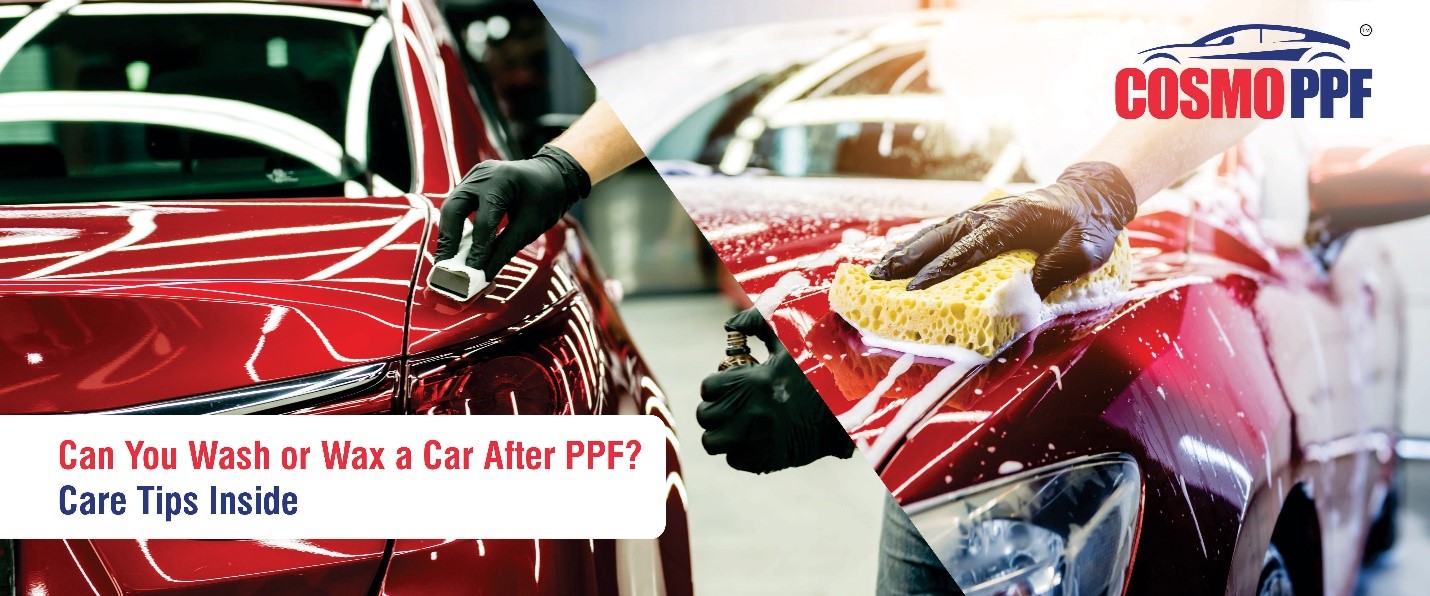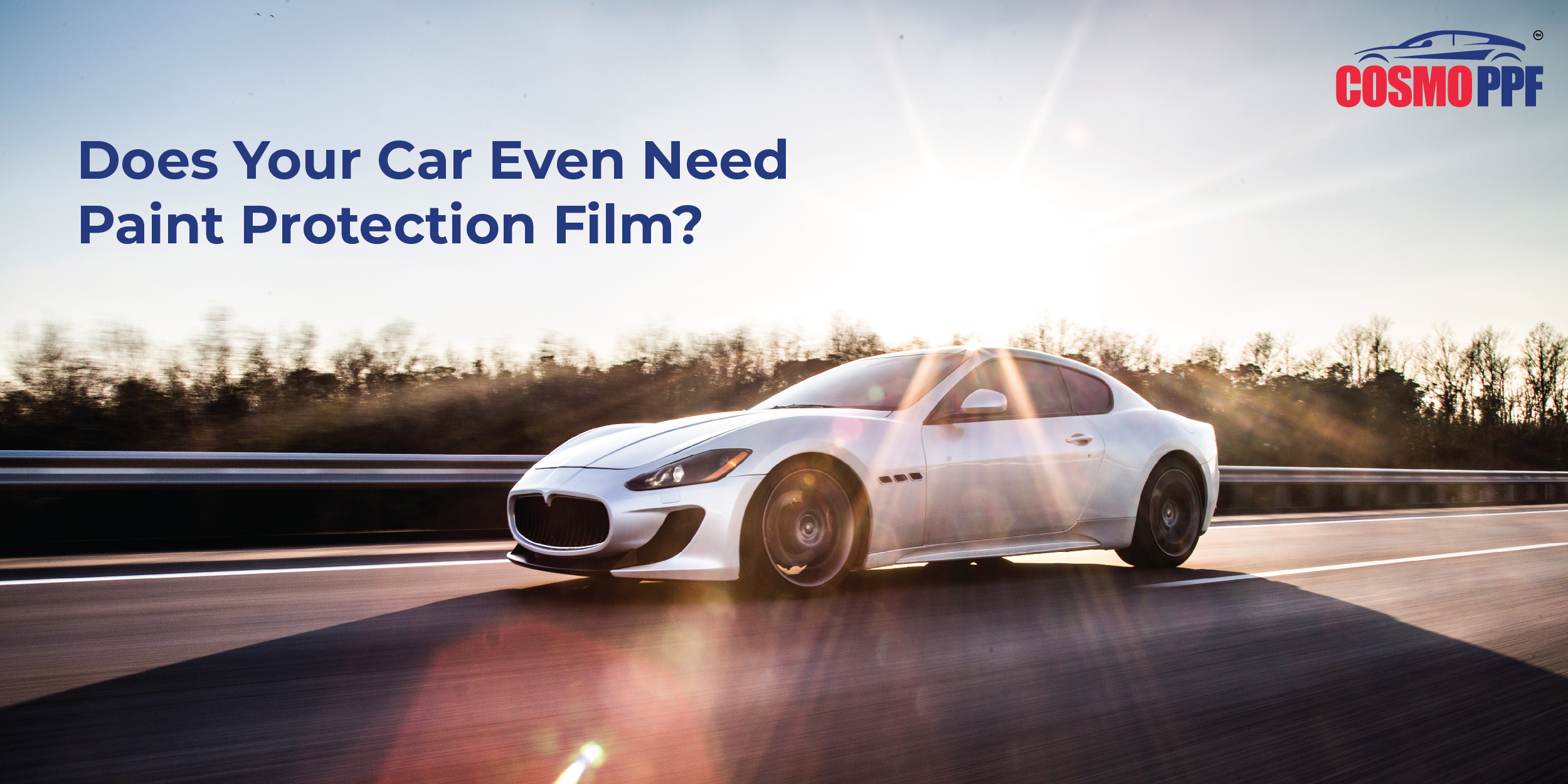Can You Wash or Wax a Car After PPF? Care Tips Inside
Published on : Jul 16,2025
Can a car be washed or waxed after PPF application? - The answer is yes, but one must follow some best practices to keep the PPF looking flawless for years to come. Let's learn everything you need to know about washing or waxing a car covered with paint protection film, along with some tips for maintenance and care.
An advanced PPF is self-healing, hydrophobic, and resistant to yellowing. However, like any exterior surface, PPF still requires proper care to maintain its clarity and protective properties.
Let's address the first question –
Can You Wash a Car After PPF?
Absolutely, a vehicle can be washed regularly to remove dirt, salt, bugs, and environmental contaminants that could degrade both the PPF on car and the underlying paint over time. Though, the following wash care tips must be followed:
Best Practices for Washing PPF Covered Cars:
- Wait Before the First Wash
After the PPF is installed, wait at least 48 hours before washing the car to allow the adhesive to fully cure.
- Use the Two-Bucket Method
Always use one bucket for clean, soapy water and another for rinsing wash mitt. This reduces the risk of dragging dirt particles across the car paint protection film, which can cause micro-abrasions.
- Choose pH-Balanced Car Shampoos
Avoid harsh detergents. Use a gentle, pH-neutral car wash soap that won't strip away the topcoat or cause discoloration.
- Use a Microfiber Wash Mitt or Soft Sponge
Hard brushes or rough clothes can scratch the surface of the PPF. Opt for microfiber to gently lift dirt without damaging the film.
- Rinse Thoroughly and Dry Softly
After washing, rinse thoroughly to remove all soap residue. Use a clean microfiber drying towel to dry the surface.
Let's address the second and big question -
Can You Wax a Car After PPF?
Yes, a vehicle can be waxed after car protection film application, but choosing the right products and techniques is important.
Waxing Do's and Don'ts:
- Do use waxes that are safe for PPF surfaces : Avoid any wax that contains abrasives, dyes, or petroleum distillates. These can degrade the film's top layer and affect its clarity or self-healing properties.
- Don't apply wax to the edges of the film : Wax buildup along the edges can cause a white outline or hazy appearance over time. Be cautious and apply wax only to flat surfaces.
- Don't polish unless necessary : Polishing may reduce the film's thickness or damage its self-healing layer at times. If correction is required, consult a professional detailer with experience in PPF.
Extra Tips for Long-Lasting PPF Care
To keep your paint protection film looking like new, you can keep these additional care guidelines in mind:
- Routine Inspection: Check PPF every few months for signs of lifting edges, contamination, or wear. Addressing issues early can prevent long-term damage.
- Bug and Tar Removal: Bug splatter and tar can be acidic and damage the film if left for too long. Use a bug and tar remover that is safe for PPF on car to gently clean these off.
- Water Spot Prevention: PPF is hydrophobic, but water spots can still form from minerals in hard water. So, make sure to dry the vehicle completely after washing, and consider using a water spot remover if needed.
- UV Protection Maintenance: Although PPF is UV-resistant, regular application of a UV-safe protectant spray can enhance the longevity of the topcoat.
- Avoid Harsh Chemicals: Steer clear of products with ammonia, bleach, or solvents. These can degrade the film and void warranties.
Washing and waxing a vehicle after application of PPF is safe. It also helps maintain the film’s appearance and protective qualities. With proper maintenance, PPF can last up to many years, shielding the car's finish from everyday hazards while retaining a deep, glossy shine.
At Cosmo PPF, we design our Gold and Platinum PPF range for both performance and longevity, but it's the care you put in that ensures they perform their best. Reach out to our team to explore our range of PPF solutions.




